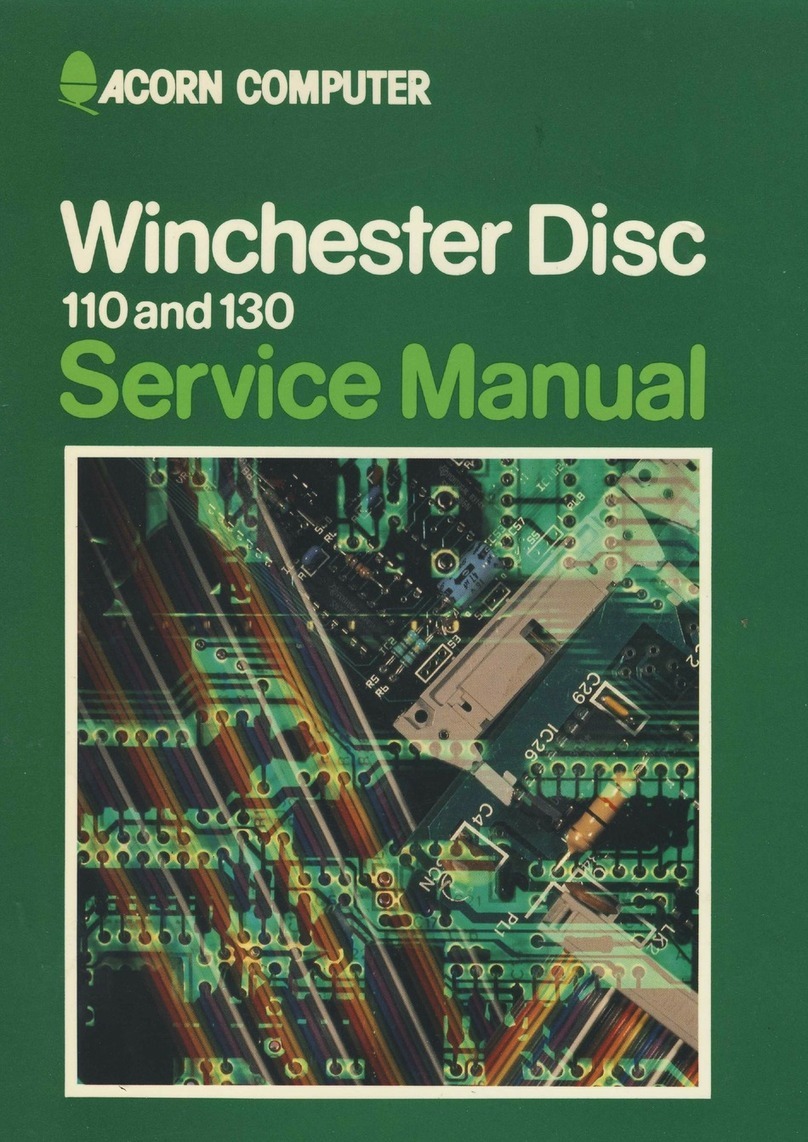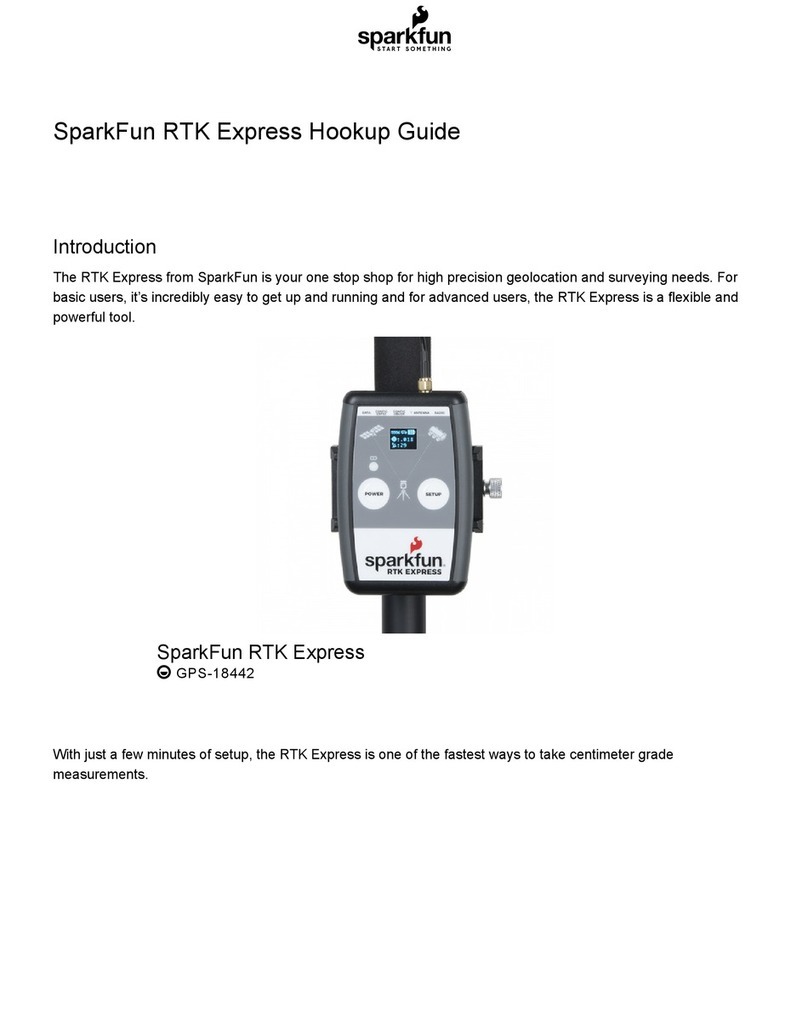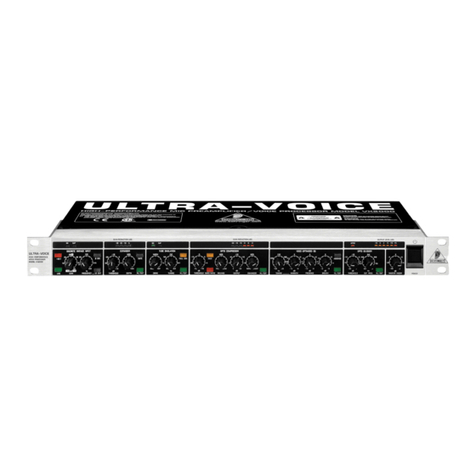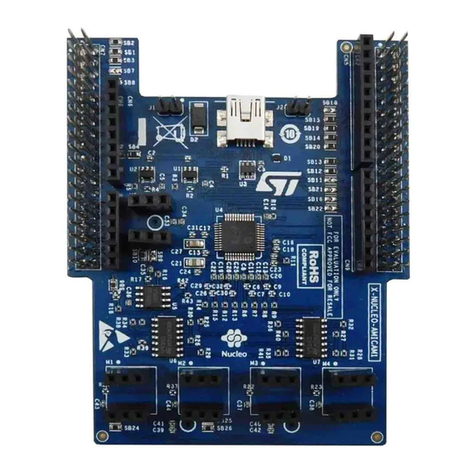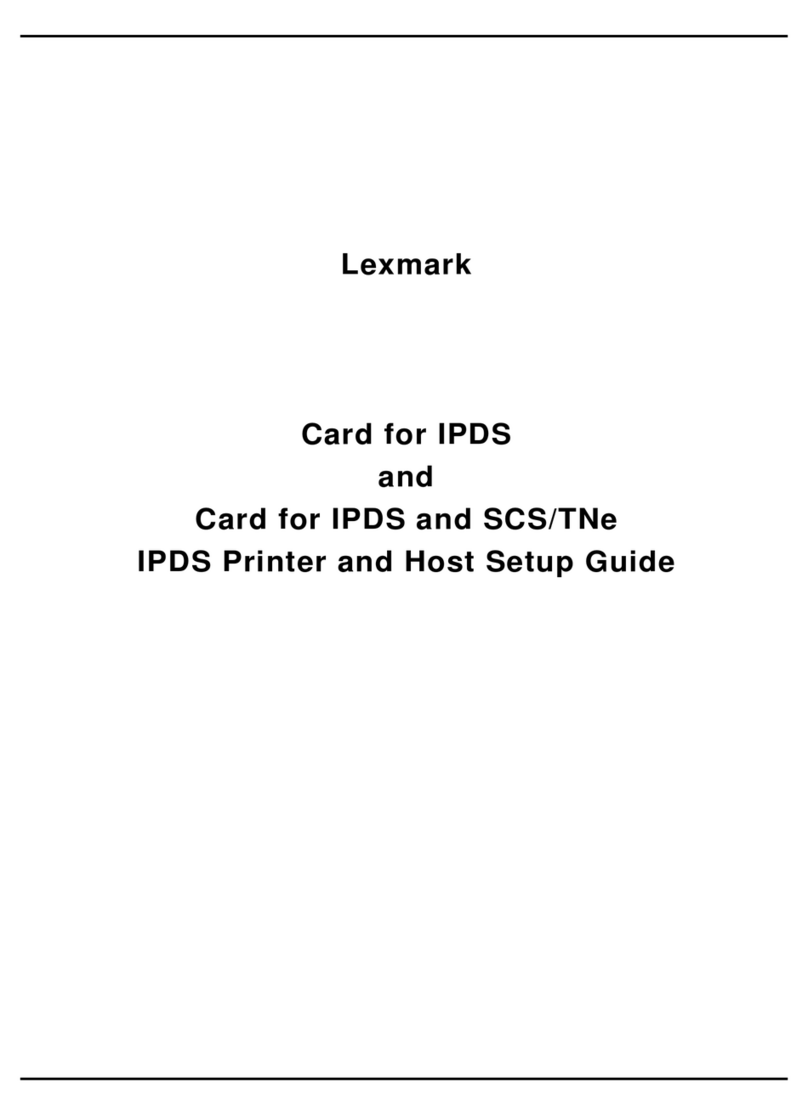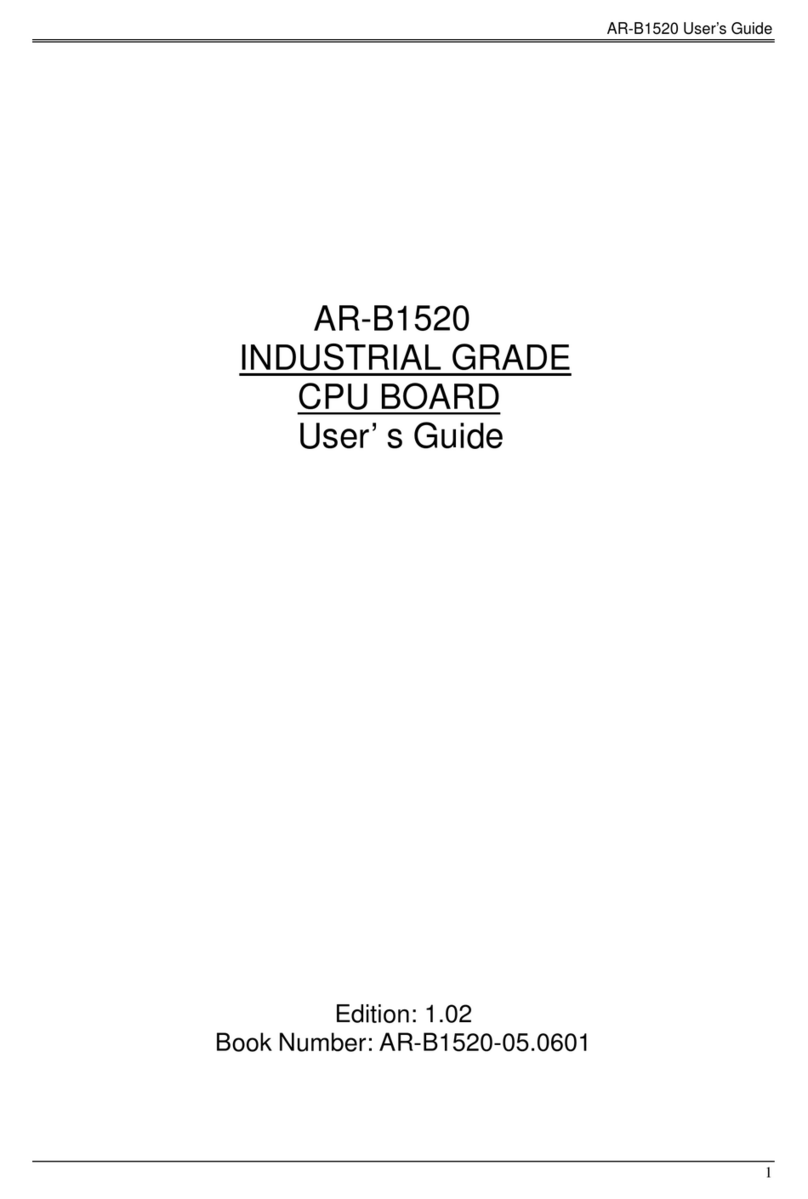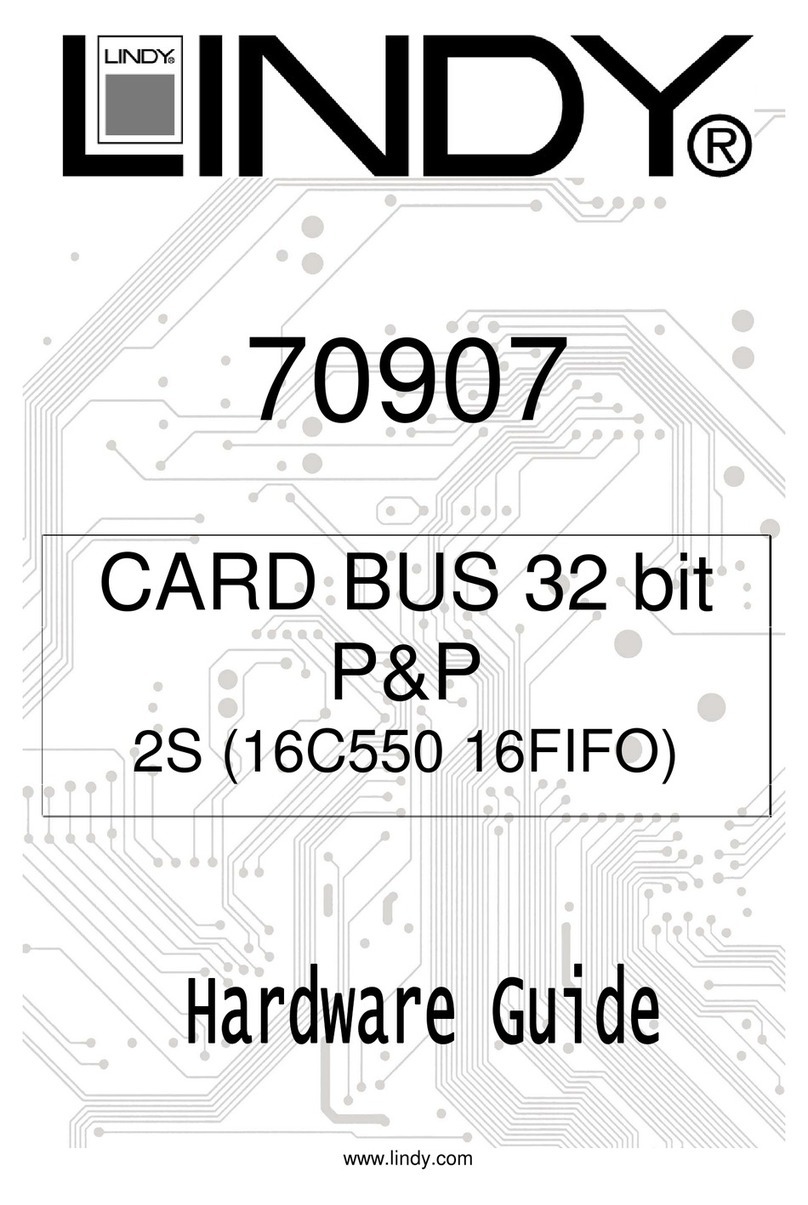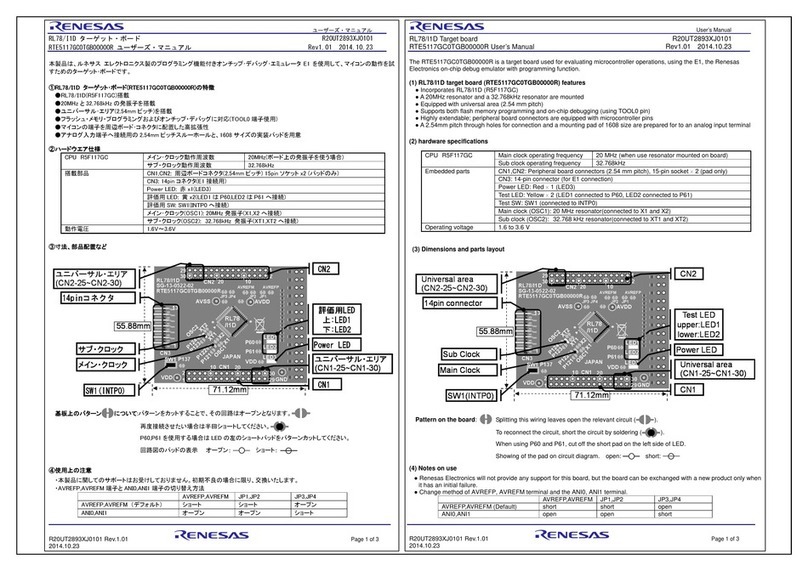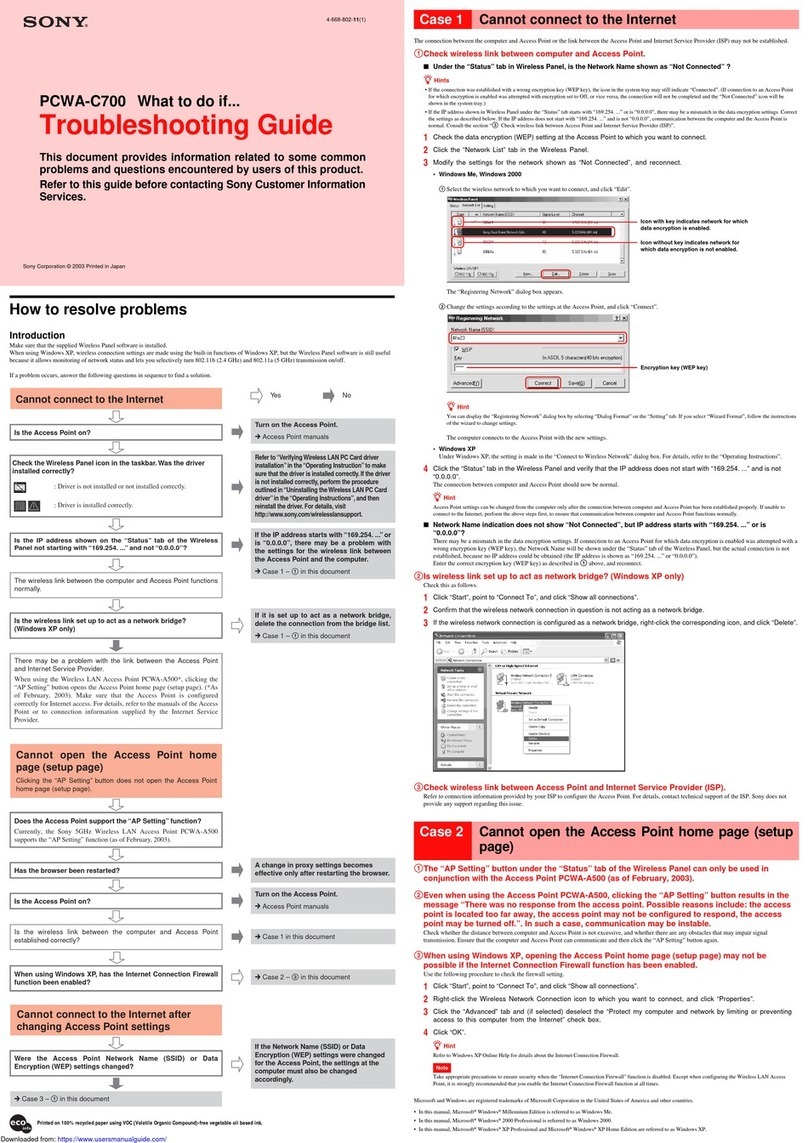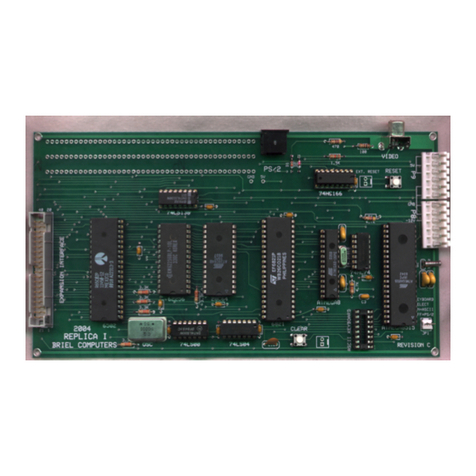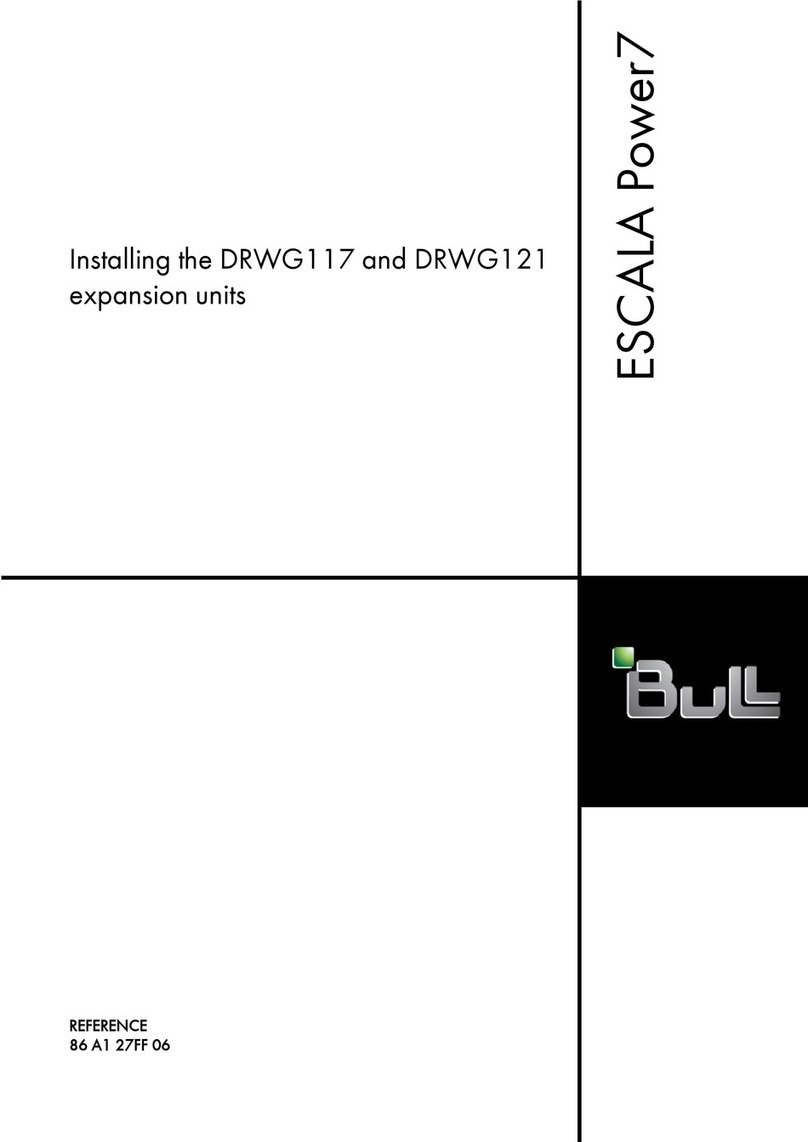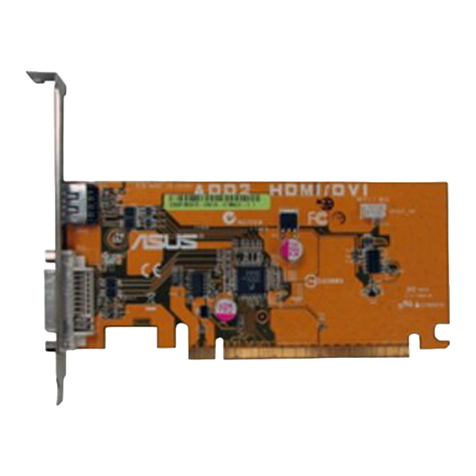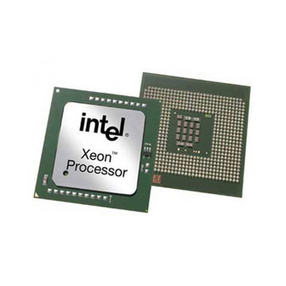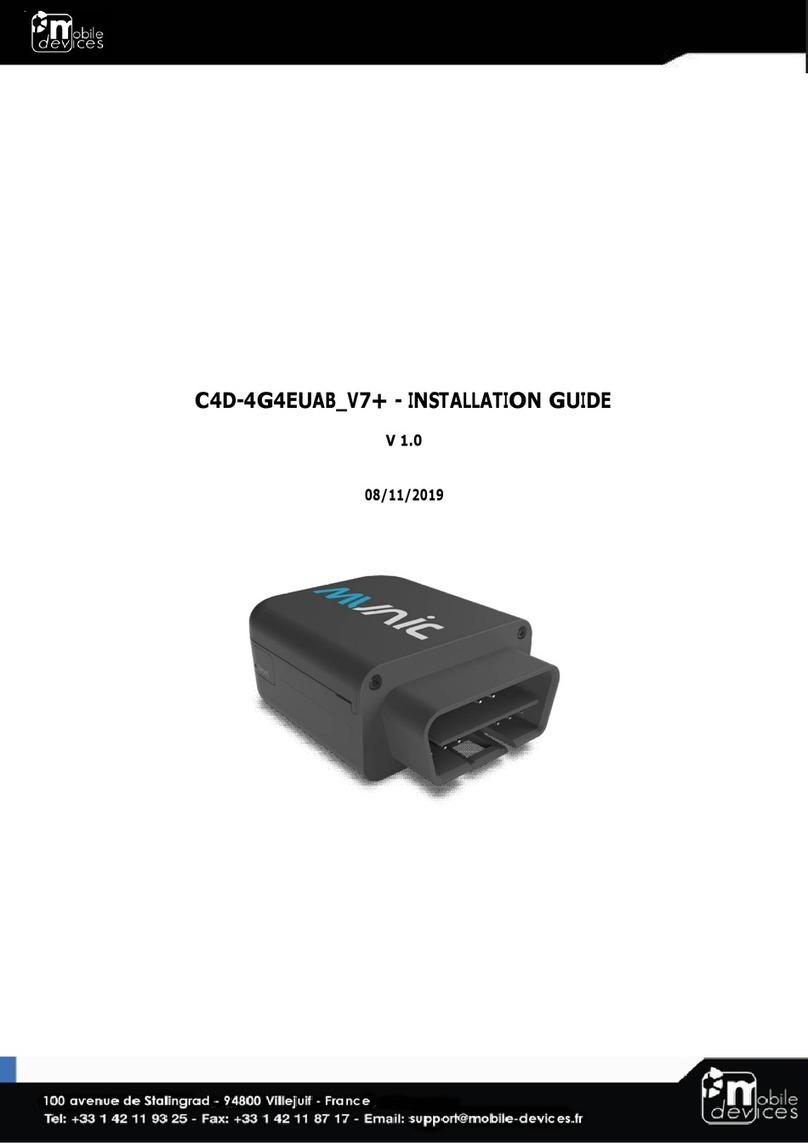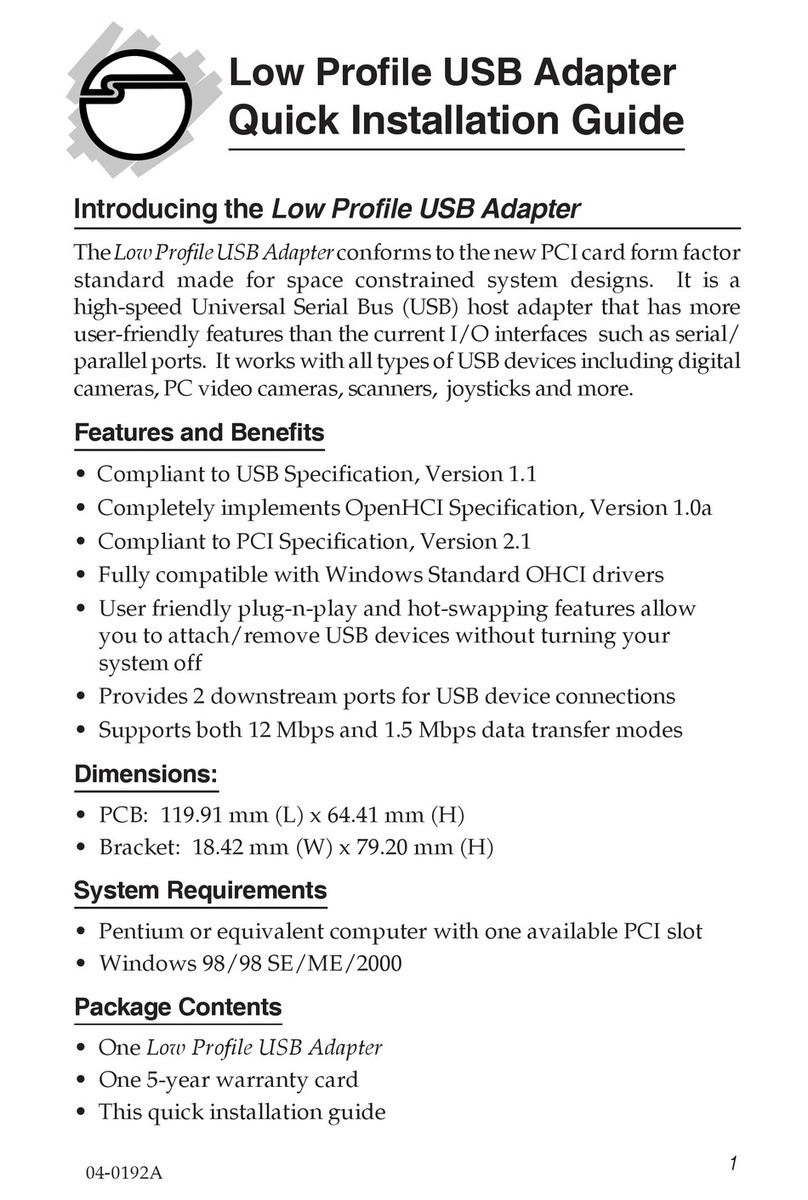Adrienne Electronics AEC-BOX-1 User manual

Options:______________________________
Date Received:________________________
Software Revision:____________________
AEC-BOX-1
INSTR CTION MAN AL
ADRIENNE ELECTRONICS
CORPORATION
(Play Speed LTC Reader with RS232/RS422 Outputs)
The serial interface is programmed as follows (change as needed):
Protocol:__________ Op Mode:____________ Address:__________
Baud Rate:_________ # Data Bits:________ Parity:___________
(protocol related)
1 2 3 4 5 6 7 8
Switches = _ _ _ _ _ _ _ _
Third Edition January 1997
Copyright (C) 1997 by Adrienne Electronics Corporation
7225 Bermuda Road, nit G * Las Vegas, NV 89119 * .S.A.
tel:+1-702-896-1858 fax:+1-702-896-3034 www.adrielec.com
Printed in .S.A. All rights reserved.
AEC-BOX-1 Manual Page 1 of 20 January 1997

*** FCC NOTICE ***
This equipment has been tested and found to
comply with the limits for a Class A digital
device, pursuant to Part 15 of the FCC rules.
These limits are designed to provide
reasonable protection against harmful
interference when the equipment is operated in
a commercial environment. This equipment
generates, uses, and can radiate radio
frequency energy and, if not installed and
used in accordance with the instruction
manual, could cause harmful interference to
radio communications. Operation of this
equipment in a residential area may cause
harmful interference, in which case the user
will be required to correct the interference
at his or her own expense.
*** COPYRIGHT NOTICE ***
You are authorized to copy and make changes to the firmware for
this product only as described in this manual. Any other copies
or changes constitute an infringement of our copyright.
*** TRADEMARK NOTICES ***
Adrienne, AEC, AEC-BOX, PC-207M, PC-LTC, PC-VITC, and PC-VLTC
are trademarks of Adrienne Electronics Corporation.
SMPTE is a registered trademark of
The Society of Motion Picture and Television Engineers, Inc.
AEC-BOX-1 Manual Page 2 of 20 January 1997

TABLE OF CONTENTS
Title Page and Copyright Notice.................................1
FCC and Trademark Notices.......................................2
Table of Contents...............................................3
Introduction....................................................4
Getting Started Quickly.........................................4
Specifications..................................................5
Hardware Description............................................6
External Cabling Installation...................................7
AC Input Voltage Range Selection................................8
DIP Switch Programming.........................................10
BINARY Message Protocol........................................12
ASCII Message Protocol.........................................13
Break Character Detection......................................14
Serial Interface Standards.....................................15
Troubleshooting Guide..........................................16
Warranty Registration, Warranty Service, etc...................17
ASCII Code Chart...............................................18
Number System Conversion Table.................................19
Where to Order Copies of Standards.............................20
ser Feedback Request........................................back
Ordering Guide...............................................back
Schematics...................................................back
AEC-BOX-1 Manual Page 3 of 20 January 1997

INTROD CTION
Adrienne Electronics Corporation (AEC) developed the AEC-BOX-1
play speed LTC reader with RS232 and RS422 outputs to provide a
low cost way of reading Longitudinal Time Code (LTC) using a
variety of personal computers and other devices. It works
equally well with both the SMPTE (30fps) and EB (25fps) time
codes, in both the forward and reverse tape directions.
Longitudinal Time Code (LTC) is a specialized audio signal which
contains digital time-of-day and frame count information relating
to an accompanying video signal. As an audio signal, it can be
recorded and played back by video and audio tape machines. LTC
is used for audio/video editing, logging, and/or automation
purposes. Time code standards have been around for many years,
and are sponsored by both SMPTE (for NTSC) and the EB (for PAL).
Related products include our PC-LTC, PC-VITC, and PC-VLTC
families of Longitudinal Time Code (LTC) and Vertical Interval
Time Code (VITC) readers and generators for IBM PC personal
computers, along with other members of the AEC-BOX family of
standalone VITC, LTC, video, RS232, and RS422 interface boxes.
Call us if you want more information on any of these products.
GETTING STARTED Q ICKLY
If you want to use your AEC-BOX-1 right away, without reading the
whole manual, just do the following:
1) Plug the AC power cord into a suitable voltage AC outlet.
2) Connect the LTC input signal to the "LTC IN" RCA jack.
3) se a serial data cable to connect the 9-pin D connector
(on the box) to your computer or other device.
The box should now be spewing out serial data corresponding to
the time code it sees at the LTC input. The software protocol is
described elsewhere in this manual. If no LTC is present, the
power LED will blink every 1.5 seconds, and a short message will
be sent. If something doesn't work, you will have to carefully
read the "INSTALLATION" section of this manual.
AEC-BOX-1 Manual Page 4 of 20 January 1997

AEC-BOX-1 SPECIFICATIONS
LTC INP T (factory default single-ended mode):
Impedance 20kohms typical
Input Level 100mVpp to 20Vpp
DC on Input +1V maximum
LTC INP T (optional differential mode):
Impedance 20kohms typical
Input Level 100mVpp to 20Vpp
DC on Input +1V maximum
CMRR >26dB @ 60Hz
LTC READER:
Speed Range (2) 1/30x to 2.2x (w.r.t. play speed)
Tape Direction Forward or Reverse
Bits Read ALL time, user, and control bits.
Time Code Standard Both SMPTE and EB , without modification.
MISCELLANEO S:
Box Dimensions (3) 16cm wide x 5cm high x 21cm long
Box Weight 1.2kg
Power Consumption 7W
Temperature Range 0 to 50 degrees Centigrade
Relative Humidity p to 95%, noncondensing
Notes:
(1) All specifications are subject to change without notice.
(2) LTC signals at much below play speed are often too distorted
to read. Varies with tape format, tape, machine, etc.
(3) Allow at least 6cm in rear for power and other connectors.
AEC-BOX-1 Manual Page 5 of 20 January 1997

AEC-BOX-1 HARDWARE DESCRIPTION
Throughout the following discussion you may want to refer to the
AEC-BOX-1 schematic which is in the back of this manual. If your
box has been customized in any way for your application, then the
descriptions below may not be entirely accurate.
The power supply primary side comprises power transformer T1 and
thermal "fuse" device F1. Of special note is the fact that this
"fuse" does not burn out. If it trips, turn the power off for
one minute to let it cool/reset, then turn the power back on.
The power supply secondary side starts with full wave rectifiers
DB1 and DB2, plus large filter capacitors C72, C73, C82, and C83.
The resulting unregulated DC supplies are then passed through
voltage regulators 70(+5V), 72(+12V), and 73(-12V).
The LTC input at RCA jack J1 first goes through a differential
amplifier centered about 10A. Note that the outer conductor on
the RCA jack is normally grounded, but may be converted to a true
differential input by cutting jumper X3. See the INSTALLATION
section for details.
The output of the differential amplifier is AC coupled to
eliminate DC offsets, then is fed into the window comparator made
up of quad comparator 9 and surrounding components. This
comparator automatically senses the incoming signal level and
adjusts itself as needed to recover the LTC transition data even
from very poor quality input signals.
The complementary outputs of the window comparator go directly to
microcomputer 4, which decodes the LTC data via a proprietary
software algorithm.
Microcomputer 4, together with address latch 20 and EPROM 1,
form a completely self contained (but miniature) computer system.
DIP switch SW1 allows easy modification of box operating modes,
baud rates, and other features.
Serial data from microcomputer 4 is translated to RS232 levels
by 7, and is translated to RS422 levels by 14. Nine pin "D"
connector J3 contains the RS232 and RS422 transmit data lines.
AEC-BOX-1 Manual Page 6 of 20 January 1997

AEC-BOX-1 EXTERNAL CABLING INSTALLATION
LTC INP T CONNECTION:
RCA jack J1 is the high impedance (20kohm) LTC input connector.
The AEC-BOX-1 can read both SMPTE and EB time codes without
modifications.
As shipped from the factory, the RCA jack's outer conductor is
connected to frame ground (the box chassis) via shunt X3 (next to
J1). You may remove X3 in order to get a true differential LTC
input, provided that the common mode voltage (usually 50/60Hz
hum) is less than 2Vrms. In this configuration, you may also
want to wrap electrical tape around the outside of the RCA input
plug so that its outer conductor cannot short to the rear panel
inadvertently.
SERIAL O TP T CONNECTIONS:
If you ordered a serial data cable with your AEC-BOX-1, just plug
it in to the 9-pin "D" connector (which has socket contacts) on
the back of the unit. Otherwise, you may use the kit of mating
connector parts to wire up to the box as follows:
Pin # | Function
========================
1 |
2 | TX422-
3 |
4 |
5 | TX232
6 |
7 | TX422+
8 |
9 | GND
Notes:
1) Tiny pin numbers are molded into the connector face.
Be careful not to be "off by one".
2) For RS422, note that the pinout is that of an ESbus Tributary.
3) Limit RS232 cables to 30 meters maximum.
4) Limit RS422 cables to 1200 meters maximum.
AEC-BOX-1 Manual Page 7 of 20 January 1997

AC INP T VOLTAGE RANGE SELECTION
Normally all AEC-BOX's are shipped with the transformer primary
wired for 100-130VAC. Your box will bear a special marking if it
has been wired for 200-260VAC instead. For your own safety,
PLEASE do not proceed unless the line cord has been unplugged!
Just turning off a power switch somewhere is not sufficient!
*** WARNING ***
NEVER OPEN P THE BOX unless the line cord has
been unplugged from its AC power source! To
do otherwise risks damage to your AEC-BOX, and
could even KILL you! We cannot assume
responsibility for such careless behavior.
Box Cover Removal:
First you must NPL G the AC power cord, remove all other cables,
then remove the bottom cover as follows:
1) se a small (#1) Phillips screwdriver to remove the two
small black screws which are on each side of the box.
2) Slide off the front and back black plastic bezels.
3) Turn the box over, then lift off the BOTTOM cover.
Note that you are now exposing yourself to a severe (FATAL) shock
hazard if the box is still plugged in to an AC power source!
Voltage Strap Modification for 200-260VAC:
In the area underneath power transformer T1, you will find four
large holes in a row, with "115V" and "230V" markings adjacent.
sing sharp nosed cutters, or some other appropriate tool, cut
out at least 2mm of the narrow trace next to each of the "115V"
markings. Then solder a short wire between the two holes closest
to the "230V" marking, being careful not to poke the ends of the
wire too far into the holes (could damage power transformer T1).
Also make sure that the wire you added is flush with the bottom
of the board, and will not even come close to touching to bottom
cover.
Voltage Strap Modification for 100-130VAC:
In the area underneath power transformer T1, you will find four
large holes in a row, with "115V" and "230V" markings adjacent.
Remove the wire between the two holes closest to the "230V"
marking. Then solder a short wire between each pair of holes
closest to the "115V" markings, being careful not to poke the
ends of the wire too far into the holes (could damage power
transformer T1). Also make sure that the two wires you added are
flush with the bottom of the board, and will not even come close
to touching to bottom cover.
AEC-BOX-1 Manual Page 8 of 20 January 1997

AC POWER INP T VOLTAGE RANGE SELECTION
(continued)
Box Cover Replacement:
Basically, just follow the earlier instructions in reverse order
(power to the box must be OFF):
1) Put the bottom cover back in place.
2) Slide a black plastic bezel onto each end of the unit. The
box looks better if the two small molding marks are facing
towards the bottom of the unit.
3) Reattach the bezels to the chassis with the four small
black screws you removed earlier. Be careful not to strip
the threads in the aluminum side extrusions!
Label The Line Cord:
Attach a small label to the plug end of the line cord, so that
the next person to use this AEC-BOX will know what AC power input
voltage range it expects to see.
Test Your Work:
BEFORE connecting any cables to the box, plug it in to the
appropriate AC power source and make sure it works (no smoke).
INSTALLING YO R OWN AC POWER LINE PL G
If the plug on the end of the AC line cord is not suitable, you
can cut it off and put on your own. Where possible, please wire
the new plug as follows:
1) Green = Ground (Chassis)
2) Blue = Neutral
3) Brown = Hot
In no case should the green wire be connected to anything but
ground! se a continuity tester to verify that the ground lug on
your new power cord is connected directly to the AEC-BOX chassis.
AEC-BOX-1 Manual Page 9 of 20 January 1997

DIP SWITCH PROGRAMMING
Box Cover Removal:
First you must NPL G the AC power cord, remove all other cables,
then remove the top cover as follows:
1) se a small (#1) Phillips screwdriver to remove the two
small black screws which are on each side of the box.
2) Slide off the front and back black plastic bezels.
3) Lift off the top cover.
Note that the bottom cover will fall off easily at this point,
exposing you to a severe (FATAL) shock hazard if the box is
still plugged in to an AC power source!
*** WARNING ***
NEVER OPEN P THE BOX unless the line cord has
been unplugged from its AC power source! To
do otherwise risks damage to your AEC-BOX, and
could even KILL you! We cannot assume
responsibility for such careless behavior.
Changing DIP Switch (SW1) Settings:
Note that the switches are numbered 1 through 8. Also note the
small "1" and "0" numbers which are on the left and right ends of
SW1. To set a switch to be a "1", simply press down on the "1"
(OPEN) end of that switch. Conversely, to set a switch to be a
"0", simply press down on the "0" end of that switch. All done!
DIP Switch Functionality:
Switch Function
1 Baud Code #1
2 Baud Code #2
3 Odd(1) or Even(0) Parity
4 Parity Enabled(1) or Disabled(0)
5 Seven(1) or Eight(0) Data Bits, & Protocol Control
6 reserved (set to 0)
7 reserved (set to 0)
8 reserved (set to 1)
The two "Baud Code" bits function as follows:
1 2
1 1 => 38400 baud
1 0 => 19200 baud
0 1 => 9600 baud
0 0 => 1200 baud
Note that at 1200 baud, it normally takes longer than one LTC
frame to transmit a message, so some LTC frames will be skipped.
AEC-BOX-1 Manual Page 10 of 20 January 1997

DIP SWITCH PROGRAMMING
(continued)
Factory Default Setting:
nless you requested otherwise, the factory default setting is
BINARY message protocol, 9600 baud, 8 bits, and ODD parity, so
SW1 will normally be 01110001 for switches 1-8, respectively.
There is no way to alter the factory default of 1 stop bit.
Message Protocol Notes:
It does not make sense to send 8-bit time code and user bits data
in binary form over a 7-bit data link, since the top bit will be
lost. Thus you will find that DIP switch #5 controls the message
protocol as well as the number of data bits being sent per serial
character.
If you select 8 data bits, the BINARY message protocol will be
used. See page 12 for details.
If you select 7 data bits, the ASCII message protocol will be
used. See page 13 for details.
Box Cover Replacement:
Basically, just follow the earlier instructions in reverse order
(power to the box must be OFF):
1) Put the top cover back in place.
2) Slide a black plastic bezel onto each end of the unit. The
box looks better if the two small molding marks are facing
towards the bottom of the unit.
3) Reattach the bezels to the chassis with the four small
black screws you removed earlier. Be careful not to strip
the threads in the aluminum side extrusions!
AEC-BOX-1 Manual Page 11 of 20 January 1997

BINARY MESSAGE PROTOCOL
Assuming that the LTC input is OK, the AEC-BOX-1 will use 8 data
bits per character to transmit the following message every LTC
frame:
Byte 0 = BREAK (20 bits low, then 2 bits high)
Byte 1 = xBH Status and length byte:
Bit 7 = 1
Bit 6 = reserved
Bit 5 = reserved
Bit 4 = 1 if skipped an LTC frame
Bits 3-0 = # of bytes which follow
Byte 2 = xxH Time code frames (packed BCD)
Byte 3 = xxH Time code seconds (packed BCD)
Byte 4 = xxH Time code minutes (packed BCD)
Byte 5 = xxH Time code hours (packed BCD)
Byte 6 = xxH ser bits frames
Byte 7 = xxH ser bits seconds
Byte 8 = xxH ser bits minutes
Byte 9 = xxH ser bits hours
Byte 10 = xxH Various LTC flags:
Bit 7 = 1 if LTC parity is nonzero
Bit 6 = 1 if reading EB (25fps) LTC
Bit 5 = LTC bit 59
Bit 4 = LTC bit 58
Bit 3 = LTC bit 43
Bit 2 = LTC bit 27
Bit 1 = LTC bit 11 (color frame flag)
Bit 0 = LTC bit 10 (drop frame flag)
Byte 11 = xxH Status byte:
Bit 6 = FWD(1) or REV(0)
Bit 5 = PLAY SPEED (if 1)
Byte 12 = xxH Checksum (sum of bytes 1-12 should be 0)
Notes:
1) All control bits have been removed from the time code data,
and appear instead in byte 10.
If no LTC input is present, or if it is present but unreadable,
the front panel LED will turn off briefly every 1-2 seconds, and
the following message will be transmitted at the same time:
Byte 0 = BREAK
Byte 1 = 11H (indicates only 1 byte follows)
Byte 2 = EFH (checksum byte)
AEC-BOX-1 Manual Page 12 of 20 January 1997

ASCII MESSAGE PROTOCOL
This protocol is much simpler than the BINARY protocol, but it is
also much more limited in its capabilities. Assuming that the
LTC input is OK, the AEC-BOX-1 will use 7 data bits per character
to transmit the following message every LTC frame:
Byte 1 = 0-2 Time code hours, tens digit.
Byte 2 = 0-9 Time code hours, units digit.
Byte 3 = ":" Separator
Byte 4 = 0-5 Time code minutes, tens digit.
Byte 5 = 0-9 Time code minutes, units digit.
Byte 6 = ":" Separator
Byte 7 = 0-5 Time code seconds, tens digit.
Byte 8 = 0-9 Time code seconds, units digit.
Byte 9 = ":" Separator ( = "." for drop frame LTC)
Byte 10 = 0-2 Time code frames, tens digit.
Byte 11 = 0-9 Time code frames, units digit.
Byte 12 = 0DH Carriage Return
Notes:
1) The number ranges presented above, such as 0-9, are actually
transmitted as ASCII numbers "0" (30H) through "9" (39H).
If no LTC input is present, or if it is present but unreadable,
the front panel LED will turn off briefly every 1-2 seconds, and
the following short message will be transmitted at the same time:
Byte 1 = "?" Question Mark
Byte 2 = 0DH Carriage Return
AEC-BOX-1 Manual Page 13 of 20 January 1997

BREAK CHARACTER DETECTION
The transmit data line on the microcomputer chip is normally high
(inactive). When a normal serial data character is transmitted,
the transmit pin first goes low for 1 bit period (the START bit),
followed by 7 or 8 DATA bits, then a PARITY bit (if enabled),
then finally goes high for 1 bit period (the STOP bit). The
START bit for the next serial data character may start
immediately thereafter.
Break characters are very different. A "break" character is
defined as a special pulse which goes low for 20 bit periods,
then goes back high for at least 2 bit periods.
The break character guarantees that the receiving ART will be
properly locked to the serial data stream, even under worst case
conditions. Since the message string includes user bits data,
which can assume any value from 00H to FFH, the break character
is necessary to unambiguously define the start of a message
string.
The break character can be detected in several ways:
a) Some ART's have a break character flag and/or interrupt,
which makes your job real easy.
b) A break character will be received as 00H data together with
a framing error.
c) If odd parity is being used, a break character will cause
reception of 00H data with a parity error.
RS232 Note:
The RS232 output signal on the 9-pin "D" connector has a polarity
opposite from that described above. The TX232 line, which is
normally low (at -6V), pulses high (to +6V) for 20 bit periods
when the break character is transmitted, then goes back low.
AEC-BOX-1 Manual Page 14 of 20 January 1997

SERIAL INTERFACE STANDARDS
For more information on any of these standards, contact the
appropriate agency as indicated on page 20.
RS232 Standard:
Interface signals are inverted versions of the ART (TXD & RXD)
signals. A valid "1" is -5V to -15V. A valid "0" is +5V to +15V.
Since RS232 drivers are always on, you can't bus them together,
which makes RS232 strictly a point-to-point communication link.
RS232 is THE most commonly used interface in the computer
industry, and is usually seen as a 25pin "D" connector on modems,
terminals, serial ports (like IBM PC COM1 and COM2), and just
about any type of peripheral you can think of. Cables should be
limited to 30 meters max, and the data rate should be limited to
19200 baud max, in accordance with the RS232 standard. The AEC-
BOX-1 does not have (and does not need) any of the handshake
lines which are used by many RS232 devices.
RS422 Standard:
The RS422 transmission standard allows for cables up to 1200
meters long, and data rates up to 10Megabaud. It uses
differential (2 complementary line) transmitters and receivers,
which greatly reduces sensitivity to common mode noise. In
addition, the transmitters can be set to a high impedance (Hi-Z)
state, which allows several transmitters to share a pair of data
lines. Thus many pieces of equipment can share the same data
bus. For the "+" output, typical output low voltages are about
0V, and typical output high voltages are about +4V. For the "-"
output, the signal polarity is reversed. In the AEC-BOX-1, the
RS422 transmitter is always enabled.
ESbus Standard:
The ESbus (EB /SMPTE Machine Control Bus) is used in the
television industry to control VTR's, routers, switchers, mixers,
and other equipment. The pinout of the AEC-BOX's 9-pin "D"
connector is that of an ESbus Tributary.
AEC-BOX-1 Manual Page 15 of 20 January 1997

AEC-BOX-1 TRO BLESHOOTING G IDE
This guide lists anticipated problems and their solutions. If
you really get stuck, call our Service Department.
Problem #1: Power LED does not blink ON when power is applied:
Solutions : a) Check for presence of external AC power source.
b) Make sure AC voltage agrees with box wiring.
c) Leave off for 1 minute, then turn back on.
PTC "fuse" will then be cooled and reset.
d) Fix broken LED wiring.
e) Return AEC-BOX for power supply repairs.
Problem #2: Power LED blinks ON initially, then stays off:
Solutions : a) Return AEC-BOX for repairs.
Problem #3: Power LED blinks OFF every 1-2 seconds:
Solutions : a) Provide a better quality LTC input to the box.
b) Check for large ground potential differences
between the AEC-BOX and the LTC source.
Problem #4: Box is not transmitting anything:
Solutions : a) Remove external serial cables - works now?
b) Make sure all DIP switches are set properly.
c) se oscilloscope to check box output lines.
Problem #5: Box transmits, but I can't receive anything:
Solutions : a) Check cables for shorts, opens, crossed wires.
b) Make sure ART parameters (baud rate, etc.) are
the same for both the box and your serial device.
c) With LTC input disconnected, try to properly
receive the short message which is sent every
1-2 seconds.
d) If using RS232, limit cable length to 30 meters.
Problem #6: Bytes are missing in the received data stream:
Solutions : a) The receiving device must be able to receive ALL
bytes in a message without any OVERR N errors,
even if interrupts occur during reception.
Change interrupt priorities, disable some, etc.
b) se a lower baud rate and see if the problem
goes away (gives more time between characters).
Problem #7: Some time code messages are missing:
Solutions : a) se a higher baud rate so that the entire message
can be sent before the next LTC frame arrives.
b) There may be dropouts or other LTC signal errors.
c) SMPTE drop frame counting eliminates some counts.
AEC-BOX-1 Manual Page 16 of 20 January 1997

WARRANTY REGISTRATION
We no longer have a formal warranty registration procedure, but
do like to keep in touch with our end users. If you did not
purchase this product directly from us, please copy the ser
Feedback Request form in the back of this manual, fill it out,
then fax or mail it back to us. This way we will know who and
where you are and be able to provide you with the following:
1) product upgrade and and bug reports,
2) manual updates and application notes,
3) safety/recall notices, and
4) better service in many other ways.
O R WARRANTY
For the first two years following the shipment of an AEC product,
we will repair or replace, at our option, any such product which
is found to be inoperative due to defects in materials or
workmanship. Not covered is damage due to unusual electrical
and/or physical abuse. Altered hardware, software, labels, or
other identifying marks may also void the warranty.
GENERAL G IDELINES
Before sending a product back to us for service, please do the
following (we've found over 90% of returned items work fine):
1) Check the "Troubleshooting Guide" in this manual.
2) Call our Service Department for assistance if needed.
3) Obtain our current return address, and possibly an RMA
number, before shipping anything back to us.
4) Package the unit carefully before shipping it (it's yours).
WARRANTY SERVICE PROCED RES
All you have to do is call our Service Department and describe
the nature of the problem. We will attempt to fix it over the
phone, but if that doesn't work we will give you an RMA number
and you can ship the defective product back to us. We will
repair or replace the product and return it to you as soon as
possible.
O T-OF-WARRANTY SERVICE PROCED RES
If the two year warranty period has expired, or if the product
has been altered or damaged, we will repair the product for a
charge to be agreed upon before the repairs are begun. Call our
Service Department for assistance. We have the test equipment,
parts, and experience to quickly find and fix any problems.
AEC-BOX-1 Manual Page 17 of 20 January 1997

7-BIT ASCII CODE CHART
-----------------------------------------------------------------
Dec Hex Key Char Description || Dec Hex Char || Dec Hex Char
-----------------------------------------------------------------
0 00h ^2 N L null char. || 43 2B + || 86 56 V
1 01h ^A SOH start heading|| 44 2C , || 87 57 W
2 02h ^B STX start of text|| 45 2D - || 88 58 X
3 03h ^C ETX end of text || 46 2E . || 89 59 Y
4 04h ^D EOT end of trans.|| 47 2F / || 90 5A Z
5 05h ^E ENQ enquiry || 48 30 0 || 91 5B [
6 06h ^F ACK acknowledge || 49 31 1 || 92 5C \
7 07h ^G BEL ring bell || 50 32 2 || 93 5D ]
8 08h ^H BS backspace || 51 33 3 || 94 5E ^
9 09h ^I HT horiz. tab || 52 34 4 || 95 5F _
10 0Ah ^J LF line feed || 53 35 5 || 96 60 `
11 0Bh ^K VT vertical tab || 54 36 6 || 97 61 a
12 0Ch ^L FF form feed || 55 37 7 || 98 62 b
13 0Dh ^M CR carriage ret.|| 56 38 8 || 99 63 c
14 0Eh ^N SO shift out || 57 39 9 || 100 64 d
15 0Fh ^O SI shift in || 58 3A : || 101 65 e
16 10h ^P DLE data link esc|| 59 3B ; || 102 66 f
17 11h ^Q DC1 device ctrl 1|| 60 3C < || 103 67 g
18 12h ^R DC2 device ctrl 2|| 61 3D = || 104 68 h
19 13h ^S DC3 device ctrl 3|| 62 3E > || 105 69 i
20 14h ^T DC4 device ctrl 4|| 63 3F ? || 106 6A j
21 15h ^ NAK no acknwldge || 64 40 @ || 107 6B k
22 16h ^V SYN synch. idle || 65 41 A || 108 6C l
23 17h ^W ETB end TX block || 66 42 B || 109 6D m
24 18h ^X CAN cancel || 67 43 C || 110 6E n
25 19h ^Y EM end of medium|| 68 44 D || 111 6F o
26 1Ah ^Z S B substitute || 69 45 E || 112 70 p
27 1Bh ^[ ESC escape || 70 46 F || 113 71 q
28 1Ch ^\ FS file sepratr.|| 71 47 G || 114 72 r
29 1Dh ^] GS group sep. || 72 48 H || 115 73 s
30 1Eh ^6 RS record sep. || 73 49 I || 116 74 t
31 1Fh ^- S unit sepratr.|| 74 4A J || 117 75 u
32 20h SPC space || 75 4B K || 118 76 v
33 21h ! ! exclamation || 76 4C L || 119 77 w
34 22h " " double quote || 77 4D M || 120 78 x
35 23h # # number sign || 78 4E N || 121 79 y
36 24h $ $ dollar sign || 79 4F O || 122 7A z
37 25h % % percent sign || 80 50 P || 123 7B {
38 26h & & ampersand || 81 51 Q || 124 7C |
39 27h ' ' apostrophe || 82 52 R || 125 7D }
40 28h ( ( left parenth|| 83 53 S || 126 7E ~
41 29h ) ) right parenth|| 84 54 T || 127 7F DEL
42 2Ah * * asterisk || 85 55 ||
ASCII is an abbreviation for
"the American Standard Code for Information Interchange".
NOTE: The keystrokes indicated above are for IBM PC's,
and may be slightly different for your equipment.
AEC-BOX-1 Manual Page 18 of 20 January 1997

N MBER SYSTEM CONVERSION TABLE
This chart will help you make conversions between the various
numbering systems which are used in this manual.
-----------------------------------------------------------------
Hexadecimal (MSB) Binary (LSB) Decimal BCD
-----------------------------------------------------------------
0 0 0 0 0 0 0
1 0 0 0 1 1 1
2 0 0 1 0 2 2
3 0 0 1 1 3 3
4 0 1 0 0 4 4
5 0 1 0 1 5 5
6 0 1 1 0 6 6
7 0 1 1 1 7 7
8 1 0 0 0 8 8
9 1 0 0 1 9 9
A 1 0 1 0 10 invalid
B 1 0 1 1 11 invalid
C 1 1 0 0 12 invalid
D 1 1 0 1 13 invalid
E 1 1 1 0 14 invalid
F 1 1 1 1 15 invalid
-----------------------------------------------------------------
(base 16) (base 2) (base 10)
(BCD is an abbreviation for "Binary Coded Decimal")
PACKED BCD N MBERS
A "packed BCD" byte contains two BCD digits in an 8-bit byte.
Bits 7-4 (upper nibble) contain the upper BCD digit, and bits 3-0
(lower nibble) contain the lower BCD digit.
For example, incrementing BINARY 09h leaves you with 0Ah, but
incrementing PACKED BCD 09h leaves you with 10h. A packed BCD
number such as 0Ah would be invalid, because "A" is not a valid
BCD digit.
Here is one more example, showing the packed BCD format as used
for time bits I/O. The 30 second (half minute) mark would be
read (or written) as a 30h byte, even though 30 decimal is the
same as binary 1Eh.
AEC-BOX-1 Manual Page 19 of 20 January 1997

WHERE/HOW TO ORDER COPIES OF STANDARDS
We suggest that you fax, call, or write the organizations below
for current prices and ordering/payment procedures. Due to
copyright restrictions, we cannot provide standards copies for
you. It takes some of these organizations up to 2 months to
respond, so plan ahead. Also, please let us know if you find
anything on this page which needs updating. Thanks.
SMPTE Engineering Standards Service
595 West Hartsdale Avenue
White Plains, NY 10607
.S.A.
Tel: +1-914-761-1100 Fax: +1-914-761-3115
1) SMPTE 207M-1992 ESbus Electrical/Mechanical $16.00
2) SMPTE RP113-1992 ESbus Supervisory Protocol $16.00
3) SMPTE RP138-1992 ESbus Control Message Architecture $13.00
4) SMPTE RP139-1992 ESbus Tributary Interconnection $16.00
5) SMPTE RP163-1992 ESbus System Service Messages $16.00
6) SMPTE RP170-1993 ESbus VTR-Specific Messages $24.00
7) SMPTE RP172-1993 ESbus Common Messages $18.00
8) SMPTE 12M-1986 Time and Control Code for Television $16.00
9) SMPTE 262M Data Storage & Trans. - Binary Groups $13.00
A) SMPTE RP159-1991 VITC and LTC Relationship $10.00
B) SMPTE RP164-1992 Location of VITC $10.00
European Broadcasting nion (EB )
Technical Department
Case Postale 67
CH-1218 Grand-Saconnex/Geneve
SWITZERLAND
Tel: +41-22-717.21.11 Fax: +41-22-717.24.81
You must order the "Annual Volume of EB Official Technical
Texts",
which (for 250 Swiss Francs) includes the following:
1) N12 Time & Control Codes for Television
2) N18 Relationship Between Time Code and PAL 8-Field Sequence
3) I29 Recording of Information in ser Bits
Telecommunications Industry Association (TIA)
(formerly part of Electronic Industries Association - EIA)
2500 Wilson Blvd.
Arlington, VA 22201
.S.A.
Tel: +1-703-907-7700 Fax: +1-703-907-7727
These standards are sold only by Global Engineering Documents:
Tel: 1-800-854-7179 Tel: +1-303-397-2573 Fax: +1-303-397-2740
1) TIA/EIA Standard RS232-E $49.00
2) TIA/EIA Standard RS422-A $51.00
3) TIA/EIA Standard RS485 $60.00
AEC-BOX-1 Manual Page 20 of 20 January 1997
Table of contents
